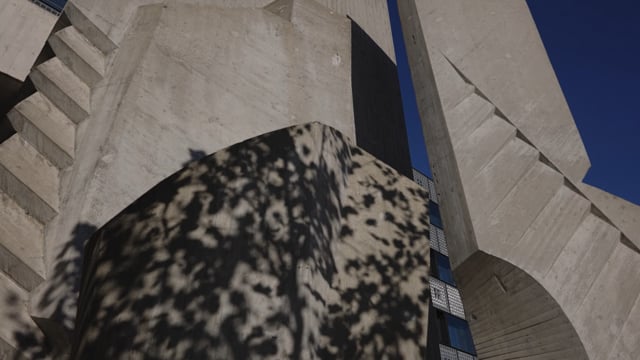Three ETH architectural projects among the 11 best Swiss buildings of 2022
The HiLo unit, the GLC research building and the Klangkleid pavilion – three architectural projects connected with ETH have won one of this year’s “Arc Awards”, a Swiss architecture prize. They received the prize in the Digitalisation, Education & Health, and Special Prize categories.

This year marks the ninth time that the Arc Award has been presented. With prize money of CHF 50,000, it is one of Switzerland’s most generous architectural prizes. It is awarded by the platform external page Schweizer Baudokumentation, which has served as a source of information for architecture since 1930. Three independent expert juries identified the best buildings from 359 submitted projects in 11 different categories, with the winners announced last week. The juries selected projects that “embody what constitutes good contemporary architecture”.
To bring a stronger focus to the urgent issues of our time – such as grey energy, CO2 emissions, recycling, and social interaction and responsibility – this year saw the introduction of three new categories: “Sustainability”, “Social Engagement” and “Digitalisation”.
HiLo – systematic, ecological and poetic
The winner of the Arc Award in the “Digitalisation” category is the “HiLo Unit Dübendorf”, designed by ETH architects from the Institute of Technology in Architecture (Block Research Group, Professorship for Architecture and Building Systems, Professorship for Digital Building Technologies) with the firm ROK Architekten. The award jury found HiLo to be the architectural child of an unconventional partnership between university and industry players, “which aims to investigate novel digital approaches to the design and creation of architecture that confronts the global climate, energy and resource crisis.” The judges saw the HiLo unit, part of the external page NEST building complex in Dübendorf, as a blend of medieval construction principles for cathedrals and 21st-century digital and robot-assisted architectural design. The jury further noted that the structure required 70 percent less concrete and 90 percent less reinforcing steel than a conventional ceiling. “The material and structural innovations are systematic, ecological and poetic,” as the award speech remarked.
GLC – the interior as multi-faceted world
In the “Education & Health” category, the Arc Award went to the “ETH GLC research building”, by Boltshauser Architekten. The award jury were impressed by the new ETH building in the Zurich university district because of the glass-block fa?ade, which immediately arouses curiosity. “Boltshauser Architekten have woven different elements together perfectly: offices, laboratories, an atrium, a double stairway with glass steps and communal areas – the interior is a multi-faceted world.” They found a clever interplay of architecture and construction materials, light and dark, transparency and colour. The holistic nature of the design was apparent throughout the building, the jury found, as the elements were repeated with mathematical precision, but without making the structure seem severe. “The windows frame views of the landscape that are so poetic they inspire daydreams.”
Klangkleid, pavilion for FrauMünsterhof21 – exemplifying equal opportunities
The Special Prize was awarded to the project “Klangkleid, pavilion for FrauMünsterhof21”, by the Créatrices association and students from the Professorship of Elli Mosayebi at the ETH Department of Architecture. The jury commended the project as an exemplary initiative and contribution to the causes of equal opportunity and diversity. The temporary pavilion in Zurich’s historic town centre was erected in September 2021 as part of celebrations to mark the 50th anniversary of women’s suffrage in Switzerland. Measuring 15 by 15 metres, the pavilion made of seven-metre-high scaffolding elements and clothed in textiles, light and sounds formed the centre of an event programme that highlighted women’s perspectives in spatial development, architecture and design, and honoured women’s achievements. At the same time, the project addressed failings and systemic injustice in the design disciplines.

